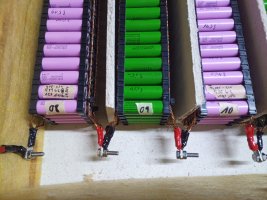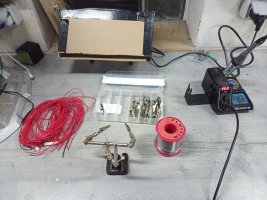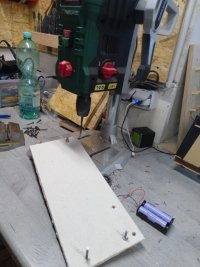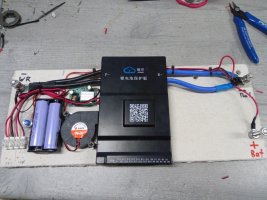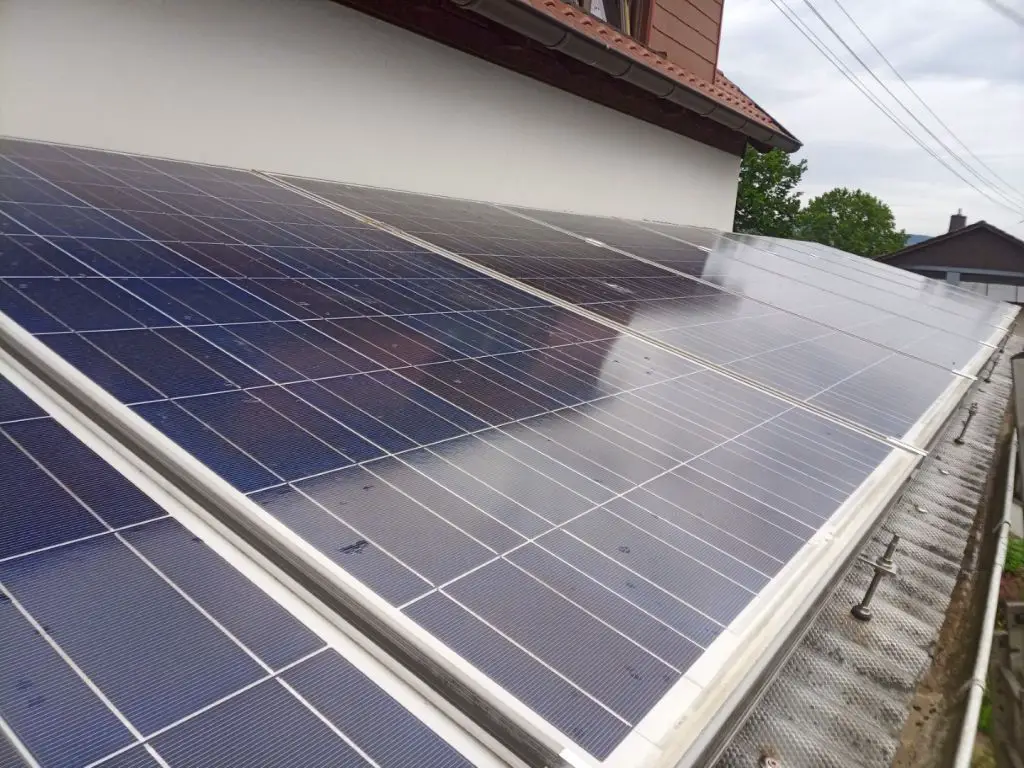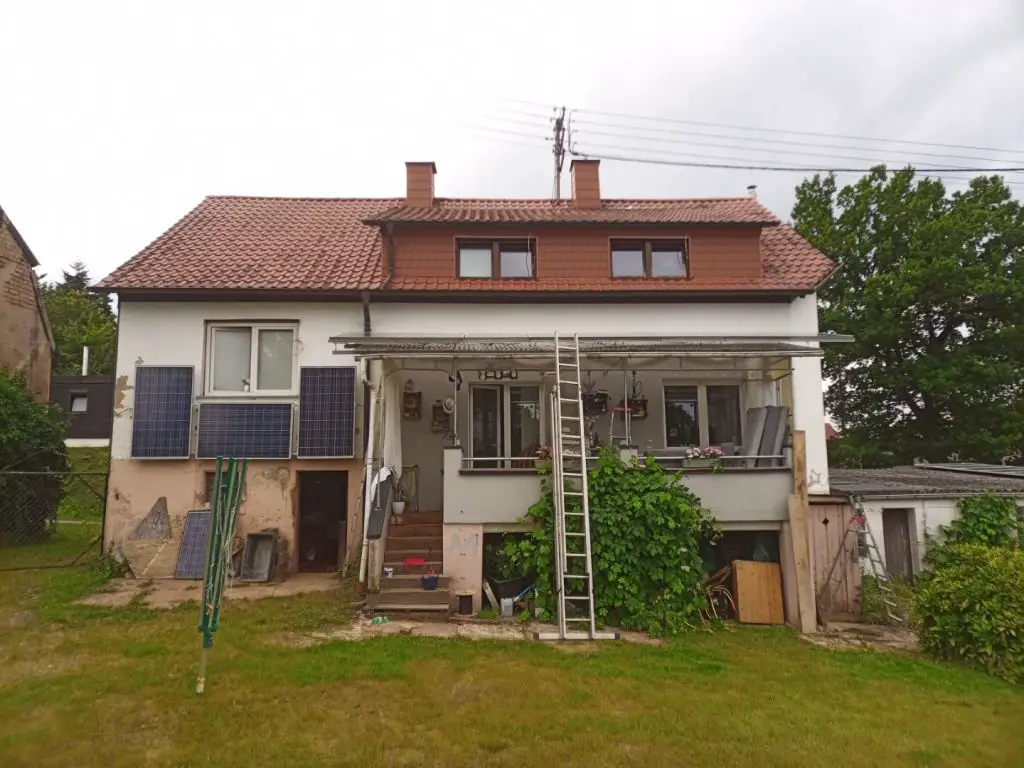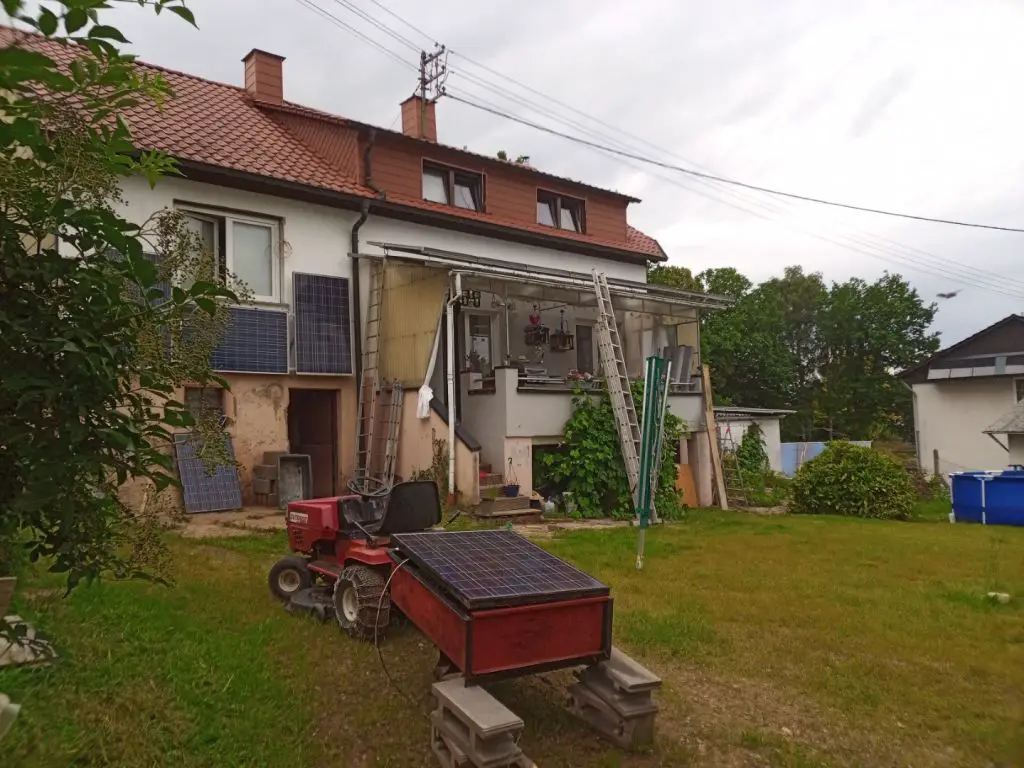I solder the fuse wires to the cells with a cheap solder-station from eBay. For me 370°C on the positive side and 390°C on the negative side seems to be perfect. At low temperatures about zero degrees at my garage where I am working you can add 5°C for soldering better
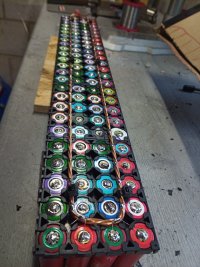
to solder the fusewire to the busbars I am using a 150W iron from Ersa, the 150S. I tried two cheap chinese irons but the tipp will melt faster than a candle and hinders me all the way in my working progress.
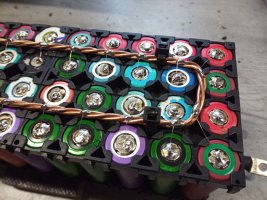
as solder wire I am using one with Sn60% Pb40% with fluxcore. Works very well without any cold soldering points. I need not more then 1 second per solder point at the cells and 2 seconds at the busbars.

here is a horrible boring video but without timelaps you can have a look at the working speed

after finishing the packs I charge them up to 4,05V...

...and test the real capacity between 4.05V and 3,30V with the modified DL24 electronic load at a discharge current of 15A.
The all have about 500Wh

to complete the installation I build some little BMS-holder

because I build up two powerwalls in parallel I am using two BMS. This is the small one with 60A/120A max and integrated active balancer with 0,6A balancing current.

the bigger, black one on the left can handle 150A/300A with 2A balancing current
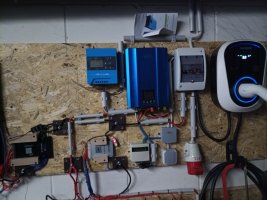
some connector-plates

now it is nearly done. The two banks on the left are one system with 8KWh and the one on the right is another 16s50p system with...
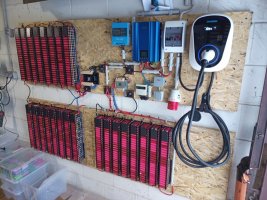
...I build as a devided pack-design to get the same size as the first powerwall

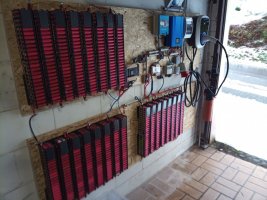

then, the last days in the old year I got my new car I am waiting for several month. It's an
Aiways U5 full electric car with 150KW engine and 63KWh battery (good for a range of 400KM)
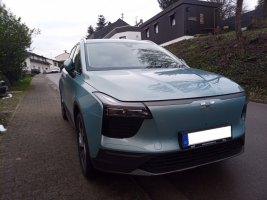
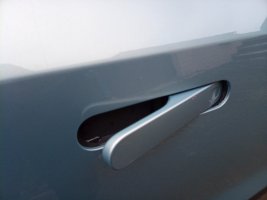
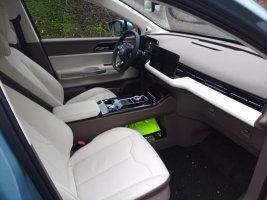
with a total of 8 cameras and all electronic assistance systems you can get this time including autonomous driving

Because I do shift work I can't always charge directly at my photovoltaic and so with the powerwall this should save a lot of money.
btw: electric prices in Germany are the highest in the whole world with 0,39USD per KWh













